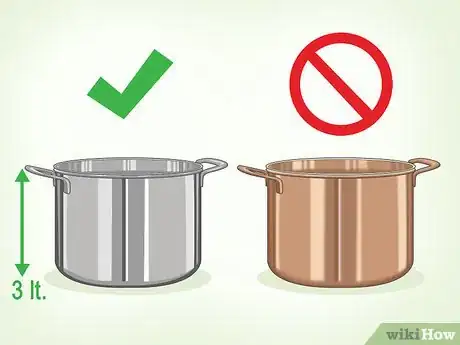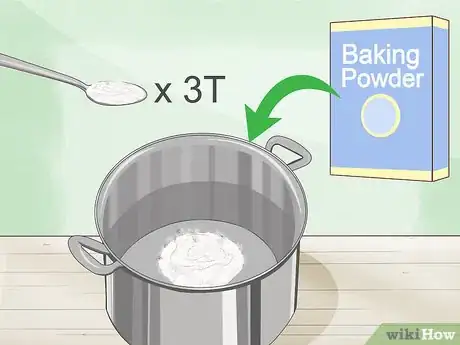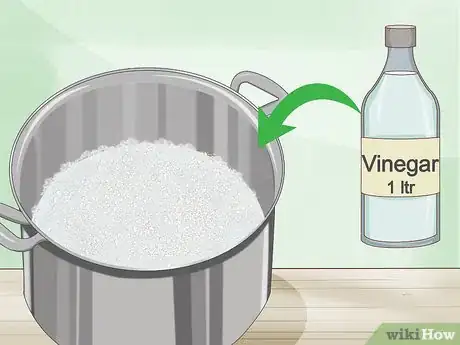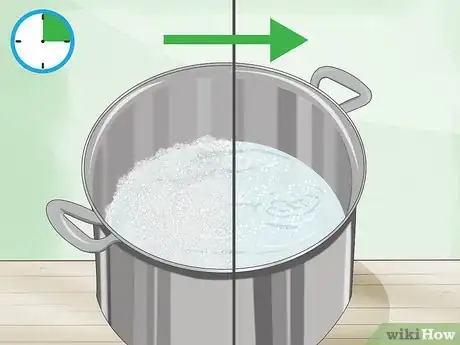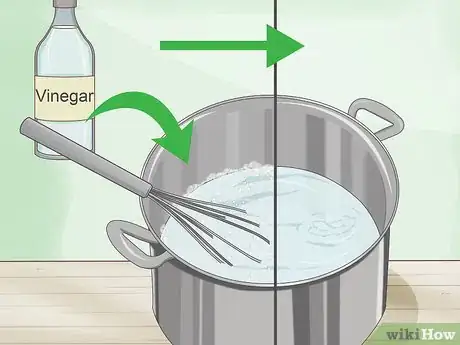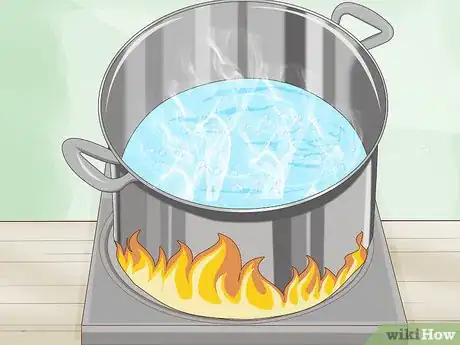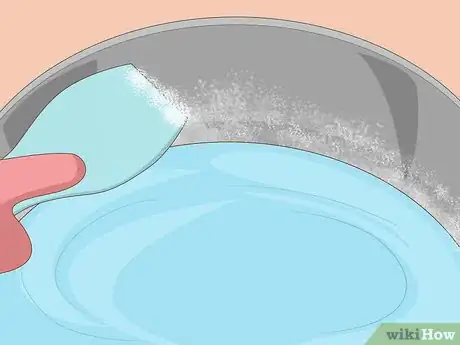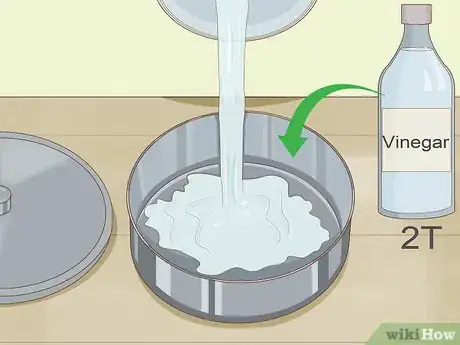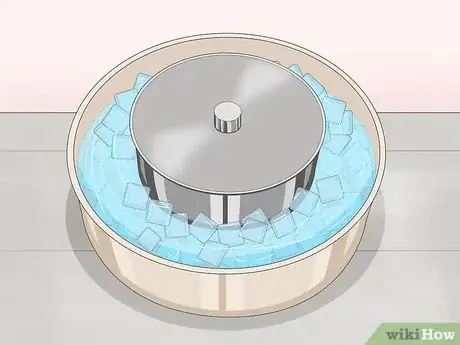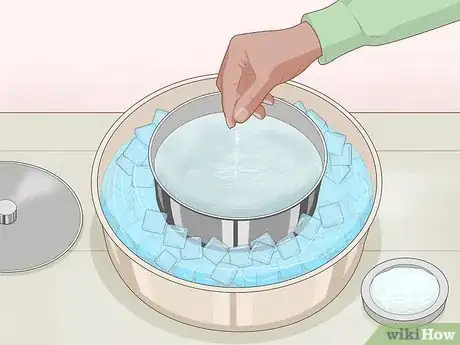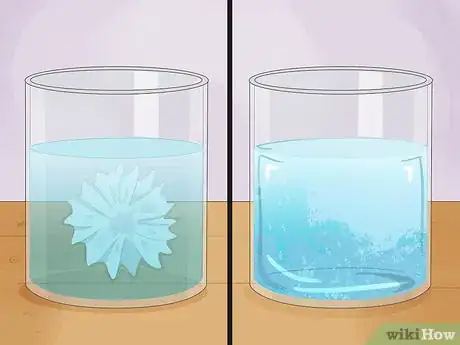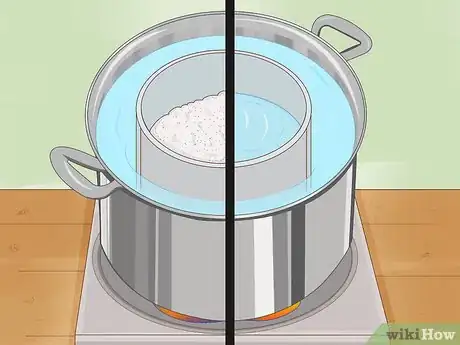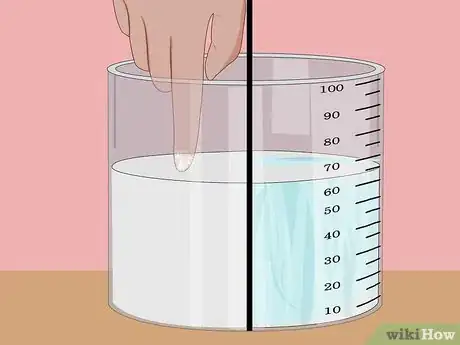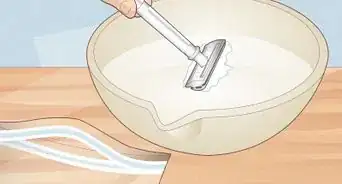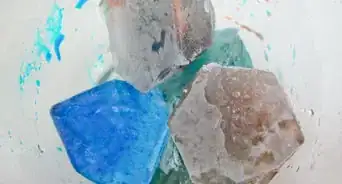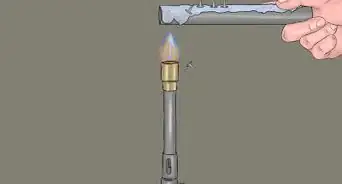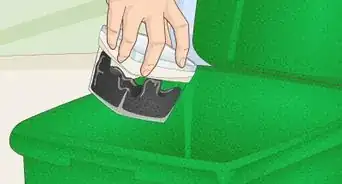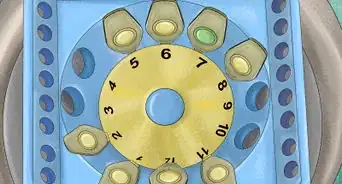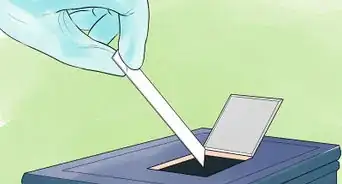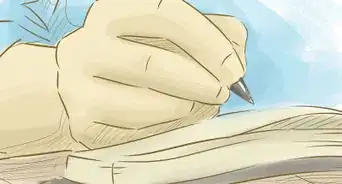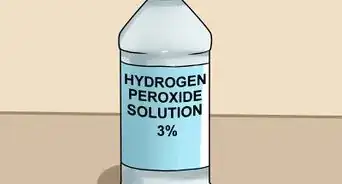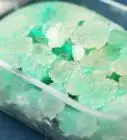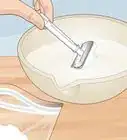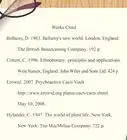This article was co-authored by wikiHow Staff. Our trained team of editors and researchers validate articles for accuracy and comprehensiveness. wikiHow's Content Management Team carefully monitors the work from our editorial staff to ensure that each article is backed by trusted research and meets our high quality standards.
There are 8 references cited in this article, which can be found at the bottom of the page.
wikiHow marks an article as reader-approved once it receives enough positive feedback. In this case, 85% of readers who voted found the article helpful, earning it our reader-approved status.
This article has been viewed 841,406 times.
Learn more...
How can ice be hot? When it's not ordinary ice. Using the same ingredients as a baking soda volcano,[1] you can create sodium acetate. By cooling this below its freezing point, you get a liquid that's ready to freeze at the slightest trigger. In the process of forming a solid crystal, it releases a burst of heat. And that's how you get "hot ice."
Steps
Making Sodium Acetate At Home
-
1Choose a large cooking pot. This must be a clean pot made of steel or Pyrex, and should hold about two quarts (two liters) or more. "Hot ice" is non-toxic, so don't worry about ruining your cookware.[2]
- Do not use a copper pot.
-
2Add baking soda. Measure out three tablespoons (45 mL) baking soda into the pot.
- You cannot use baking powder, which contains other chemicals that interfere with the process.
Advertisement -
3Pour in white vinegar. Measure out about one quart (liter) white vinegar, then pour it bit by bit into the container. It will fizz immediately, so don't pour too quickly or it might overflow.[3]
- This measurement assumes you're using 5% acetic acid, which is a common concentration for commercial vinegar. This doesn't need to be a precise measurement, though.
-
4Wait until the liquid stops fizzing. The vinegar (acetic acid) and baking soda (sodium bicarbonate) are reacting to produce sodium acetate, along with the carbon dioxide that causes all this fizzing. Give the liquid a good stir as it fizzes to make sure all the baking soda is mixed in, then wait for the reaction to end.
-
5Make sure the liquid is completely clear. If you still see a single grain of baking soda, add more vinegar until they all disappear. Any baking soda left in the liquid could freeze your "hot ice" before you want it to, later in the process.
-
6Boil until the first trace of a film appears on the surface. Vinegar is mostly water, which you'll need to boil away. Once about 90% of the liquid is gone — which could take half an hour of boiling or more — a crusty film will begin to form on the surface.[4] This means all the excess water is gone and you need to turn off the heat as fast as possible. If you let too much of a crust develop, your liquid will get cloudy and not work very well.
- If it does get very brown and cloudy, add a bit more vinegar and boil again.
- The sodium acetate starts out as "sodium acetate trihydrate," meaning it contains water. Once all the water around it is gone, those water molecules start to evaporate and the sodium acetate becomes "sodium acetate anhydrous," meaning "without water."
-
7Scrape off the crystals on the side of the pot. As the water level gets lower, you'll notice powdery sodium acetate crystals sticking to the inside of the pot. You'll need these later, so use a spoon to gather them in a separate container. You can do this at any point while the mixture is boiling.
-
8Transfer to a sealed container. Ladle the liquid into a clean Pyrex glass or another container that can safely hold hot liquid. Make sure not to get any solid crystals into this container. Cover tightly.
- It's a good idea to add 1 or 2 tablespoons (15–30 mL) of vinegar. The vinegar will help keep the solution in its aqueous state, instead of forming that crust again.
-
9Chill the container in an ice bath. Wait until the container of sodium acetate cools to room temperature or lower. This should take about 15 minutes in a bowl of ice water, or longer in the fridge. The goal is to "super-cool" the sodium acetate trihydrate. This means it will drop below its freezing temperature, but still remain liquid.
- If the liquid freezes during this stage, there might be a solid piece of crystal in it, or some other impurity. Add more vinegar, return to the stovetop, and try again. This is a difficult process, so it's rare that you'll get it on your first try.
-
10Add a bit of crystallized sodium acetate to your aqueous solution. Use the powder scrapings you removed from the pot while you were boiling down the solution. Start with a small pinch or two; if they have no effect, add more.[5]
-
11Watch your hot ice form.[6] The solid sodium acetate provides a seed crystal for all the super-cooled acetate to grow from. Since the sodium acetate is already super-cooled and ready to freeze, this should set off a rapid chain reaction, freezing the entire solution. This releases heat, which you can easily feel if you put your hands near the container.
- If this does not happen, there is a problem with your solution. Add more vinegar and boil again — or try the more reliable store-bought method below.
Using Store-Bought Sodium Acetate
-
1Find sodium acetate trihydrate. Although this is an inexpensive, nontoxic ingredient, it's not commonly available in local stores. You'll probably have an easier time buying it online. (You may be able to take it from a squeeze-activated warming pad instead.)
- Sodium acetate is also sold as "sodium acetate anhydrous," and some vendors do not specify which form they mean. The instructions below cover both forms.
-
2Place in a boiling water bath. Place the sodium acetate in a steel or Pyrex container, then place that container in a pot of boiling water. It should melt to pure liquid sodium acetate trihydrate, or "hot ice."
- If the sodium acetate does not melt, you've bought sodium acetate anhydrous. To turn it into sodium acetate trihydrate, add hot water while it's still in the boiling water bath. It will take about 2 mL water for every 3 grams of sodium acetate to fully dissolve the substance.
- Don't use all of your sodium acetate. You'll need a little for later.
-
3Chill immediately. Transfer to a clean container, cover, and place in an ice bath or fridge until it reaches room temperature or below.[7] Make sure not to get any solid sodium acetate in this container, or it will freeze too early.
-
4Touch the cool solution with solid sodium acetate. The solid crystal is a nucleation point, meaning it allows the other sodium acetate molecules to stick around it and expand into a crystal form. Soon the whole container should look like a block of ice — except it's radiating heat!
- Other impurities can trigger the freezing if they happen to be the right shape. This means you can sometimes trigger it by touching it with a toothpick or your finger, but solid sodium acetate is the only reliable way.
Expert Q&A
Did you know you can get expert answers for this article?
Unlock expert answers by supporting wikiHow
-
QuestionWhat conclusions should be derived from this?
 Meredith Juncker, PhDMeredith Juncker is a PhD candidate in Biochemistry and Molecular Biology at Louisiana State University Health Sciences Center. Her studies are focused on proteins and neurodegenerative diseases.
Meredith Juncker, PhDMeredith Juncker is a PhD candidate in Biochemistry and Molecular Biology at Louisiana State University Health Sciences Center. Her studies are focused on proteins and neurodegenerative diseases.
Scientific Researcher The first conclusion you can draw is sodium acetate exists in a supercooled liquid form below its usual freezing point. This is why the solution is capable of cooling to room temperature without forming crystals. The second conclusion is supersaturated solutions release heat upon crystallization (exothermic bond formation), which is why the "ice" feels hot.
The first conclusion you can draw is sodium acetate exists in a supercooled liquid form below its usual freezing point. This is why the solution is capable of cooling to room temperature without forming crystals. The second conclusion is supersaturated solutions release heat upon crystallization (exothermic bond formation), which is why the "ice" feels hot. -
QuestionCan I use apple cider vinegar to make hot ice?
 Meredith Juncker, PhDMeredith Juncker is a PhD candidate in Biochemistry and Molecular Biology at Louisiana State University Health Sciences Center. Her studies are focused on proteins and neurodegenerative diseases.
Meredith Juncker, PhDMeredith Juncker is a PhD candidate in Biochemistry and Molecular Biology at Louisiana State University Health Sciences Center. Her studies are focused on proteins and neurodegenerative diseases.
Scientific Researcher Theoretically, yes. Apple cider vinegar contains a similar amount of acetic acid to white vinegar since they are both produced through the same process. However, apple cider vinegar is often distributed unfiltered/unpasteurized and will contain more impurities than white vinegar. These impurities may cause the ice to become solid sodium acetate sooner than you would want it to. Also, apple cider vinegar has a brownish color, which may not be the best choice when making hot ice.
Theoretically, yes. Apple cider vinegar contains a similar amount of acetic acid to white vinegar since they are both produced through the same process. However, apple cider vinegar is often distributed unfiltered/unpasteurized and will contain more impurities than white vinegar. These impurities may cause the ice to become solid sodium acetate sooner than you would want it to. Also, apple cider vinegar has a brownish color, which may not be the best choice when making hot ice. -
QuestionWhat could hot ice be used for?
 HanCommunity AnswerSodium acetate (CH3COONa) has a variety of uses. It can be used to neutralize sulfuric acid or create a buffer solution. CH3COONa is also sometimes used in heating pads and hand warmers.
HanCommunity AnswerSodium acetate (CH3COONa) has a variety of uses. It can be used to neutralize sulfuric acid or create a buffer solution. CH3COONa is also sometimes used in heating pads and hand warmers.
Warnings
- Do not touch the solution until it's cooled!⧼thumbs_response⧽
Things You'll Need
- Sodium acetate trihydrate (or white vinegar and baking soda)
- Medium to large pot (steel or Pyrex)
- Water
- Clean container
- Ice bath (or refrigerator)
References
- ↑ http://www.rsc.org/learn-chemistry/resource/res00002026/bubble-volcanoes?cmpid=CMP00006775
- ↑ http://smile.cosi.org/cooking-with-chemistry-teacher-packet-and-classroom-activities.pdf#page=10
- ↑ https://youtu.be/g584hrAIMKc?t=40
- ↑ https://youtu.be/AedL_NCv1Pw?t=82
- ↑ https://www.raisingmemories.com/2014/05/homemade-hot-ice-sodium-acetate.html
- ↑ https://youtu.be/pzHiVGeevZE?t=60
- ↑ https://www.fleet.org.au/blog/hot-ice/
- https://www.raisingmemories.com/2014/05/homemade-hot-ice-sodium-acetate.html
About This Article
To make hot ice, combine baking soda and white vinegar in a large steel pot. When the mixture stops fizzing, put the pot on a stovetop and bring the mixture to a boil. Right when a crusty film starts to form on top of the mixture, turn the stovetop off. Scrape off the powdery crystals on the side of the pot with a spoon and put them in a separate container. Then, transfer the liquid mixture into a heat-resistant container, seal it shut, and chill it in an ice bath for 15 minutes. Finally, sprinkle some of the powdery crystals into the mixture to create hot ice! If you want to learn how to use store-bought sodium acetate for hot ice from our Biochemistry Ph.D. co-author, keep reading!
